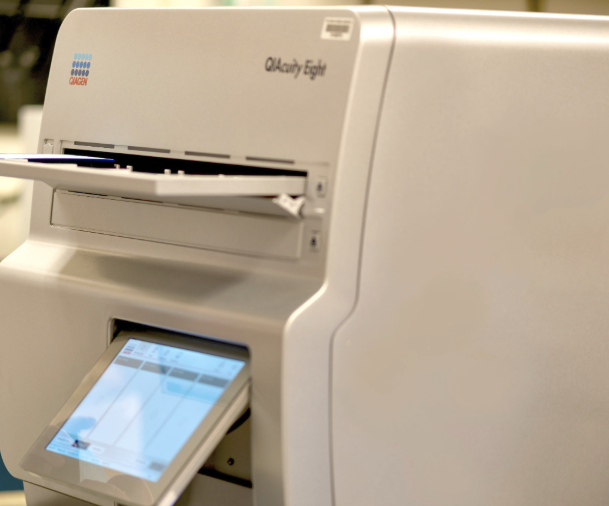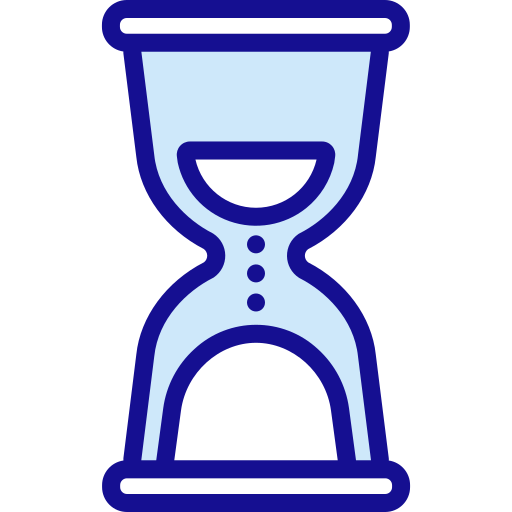
What is Digital PCR?
Digital PCR (dPCR) is a different approach to nucleic acid detection and quantification. It allows for absolute quantification and rare allele detection relative. dPCR works by partitioning a sample into many individual miniature PCR reactions; some portion of these reactions contain the target molecule (positive) while others do not (negative). Following PCR, the fraction of positive partitions is used to generate an absolute count of the target molecules in the sample, without reference to standards or endogenous controls.
Applications
- Rare allele detection
- Absolute quantification of gene expression
- Absolute quantification of viral load
- Absolute quantification of nucleic acid standards
- Absolute quantification of next-generation sequencing libraries
Advantages
- No need to rely on references or standards
- Desired precision can be achieved by increasing the number of PCR replicates
- Highly tolerant to inhibitors
- Capable of analyzing complex mixtures
- Provides a linear response to the number of copies present to to help enable analysis of small fold-change differences
Platform
The GRCF offers digital PCR which is partition based, not droplet based. The sample is partitioned into individual partitions, and can be used with a variety of assays, including QuantaNova, Taqman and PrimeTime Assays.
QIAcuity dPCR system

This system injects the sample into a nanoplate, which has individually sealed partitions of fixed sized. The nanoplates are formatted in a standard 96 well format, making them easily amenable to multi-channel pipetting and faster, familiar workflows. Partitioning, cycling and reading of the samples all occur on the same instrument in a very streamlined manner. Multiplexing of up to 5 assays in the same sample is possible, if all are within the digital range at the same dilution.
The nanoplates come in two different formats: 24 well, which has 26,000 partitions and 96 well, which has 8,500 partitions. The 24 well plates are ideal for looking at rare events, the 96 well plates are great for precisely counting more frequent events.
Full Plates
24 well plates $14/well
96 well plates $12/well
Partial Plate Charge
24 well plates: $3/empty well
96 well plates: $1.50/empty well
*Please note that pricing is per well. Samples run in duplicate or triplicate will be charged for each well used.
Other possible fees:
New assay condition testing: Pricing is dependent on the complexity of the project
Sample preparation: $2/sample (includes sample normalization or preparation of serum samples)
Caveats
There are some implications to this absolute count that should be understood prior to undertaking a digital experiment.
Samples must be diluted to reach the digital range. Since we are now counting molecules in a small, dilute sample, instead of looking at a concentrated sample in a large volume, the mixing of your sample prior to making a dilution is critical. Each time you dilute a sample, you take a specific number of molecules from a tube and move them to another tube. No matter how well the sample is mixed, a different number of molecules will be removed from the tube each time you pipette from it. Good mixing will even this out, but they will never be exactly the same. This difference increases with each dilution step that you make. Because of this, you may want to consider running more than one sample from different dilutions of the same stock.
The results returned measure the number of copies per µl in the solution that was put onto the chip. For this answer to have any meaning, you must have some idea of what you put on the chip. If you want to know copies per cell, then you will need to either count the cells before you start, or have some way of measuring the number of chromosomes in your sample, i.e. use a gene like RNAse P or Tert that has only one copy per chromosome in normal cells.
Digital PCR is an exciting new technology, but it requires careful thought and planning to answer particular questions. Because of this, consultation is required prior to starting an experiment. Please contact us to make an appointment.

Location
Johns Hopkins East Baltimore Medical Campus
600 N. Wolfe Street
Blalock Building, Room 1004
Baltimore, MD 21287 USA

Hours
Monday – Friday:
7:00 am to 4:30 pm
Samples may also be dropped off at any of our refrigerated remote drop-off locations:
- CRB1 B02A
- UTL 384 (Homewood)
- Croft hall outside room 141 (Homewood)
- Asthma & Allergy first floor back hallway (Bayview)

Contact
Phone
410-955-2836
my green lab Certified: Level “Green”

